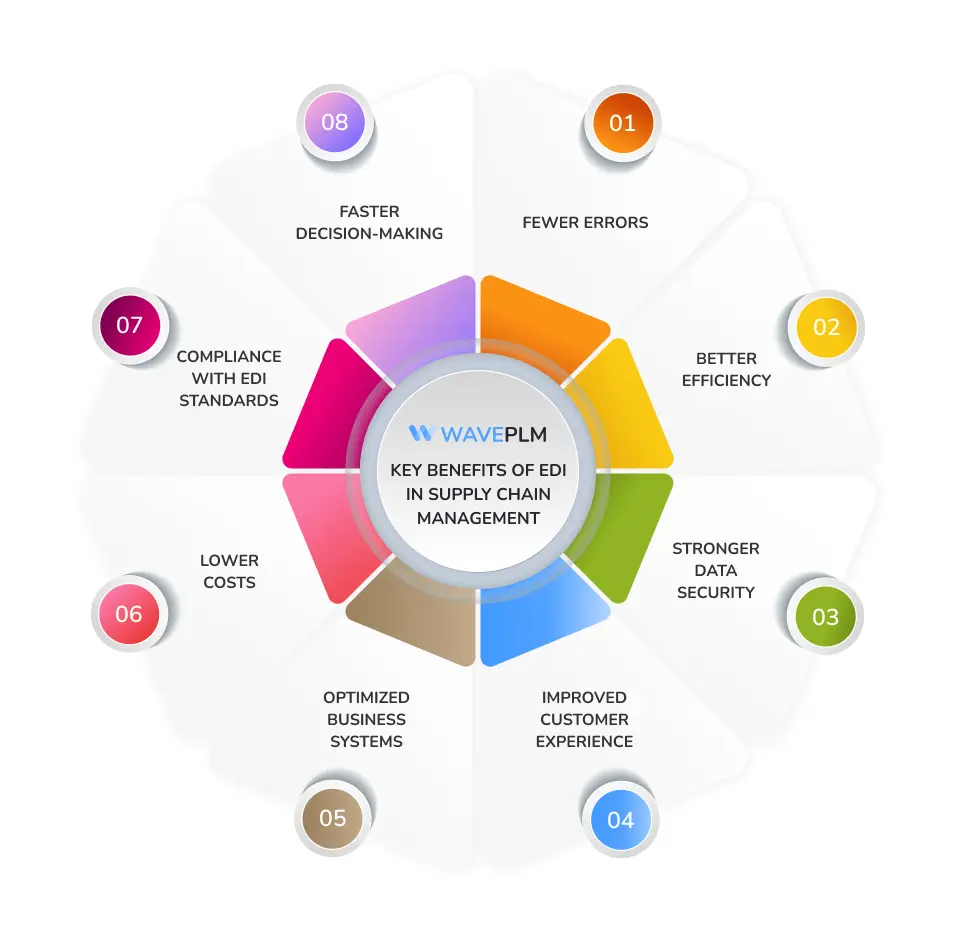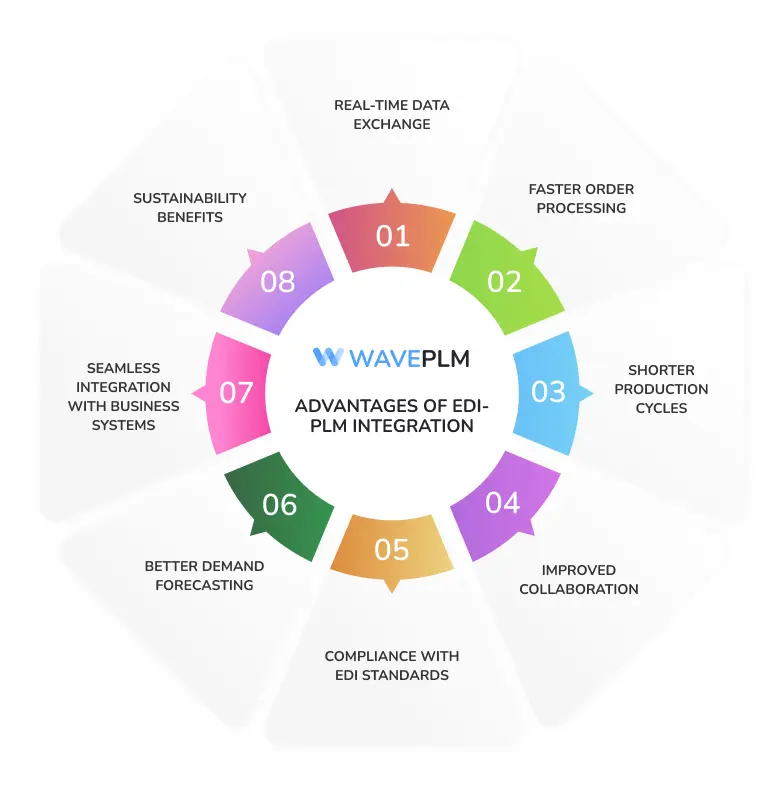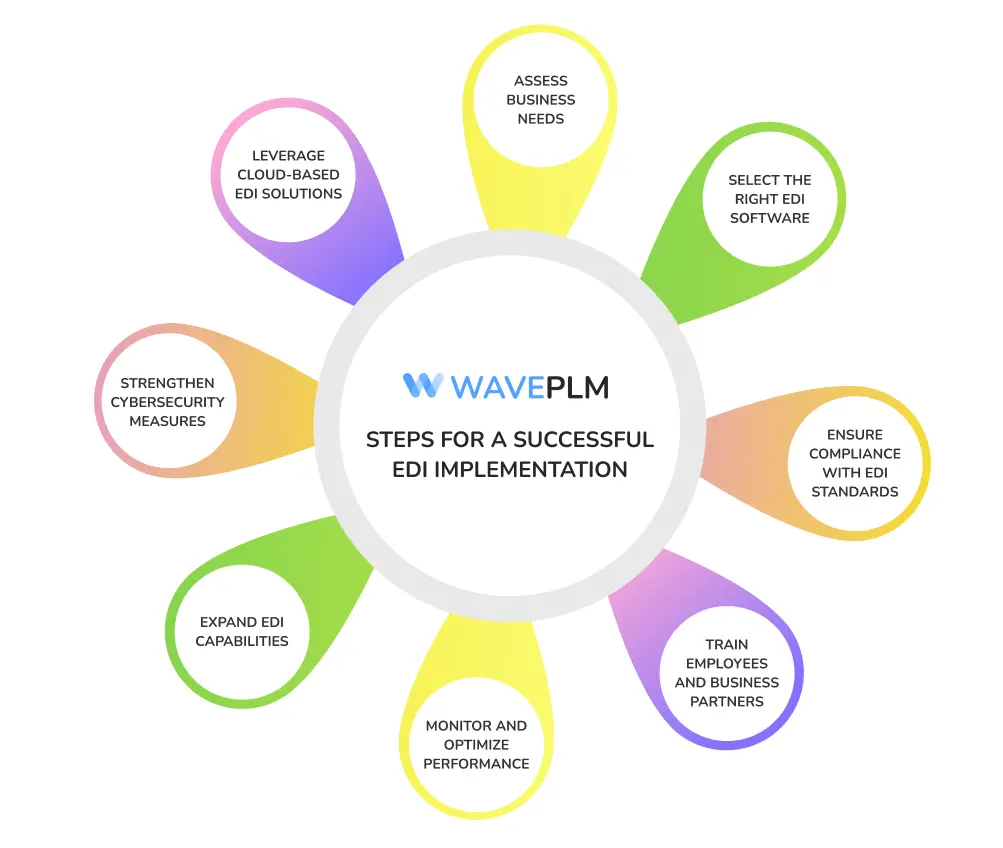
Modern supply chains need speed, accuracy, and efficiency. Electronic data interchange (EDI) software helps businesses automate the exchange of business documents and streamline supply chain operations.
When combined with product lifecycle management (PLM) software, EDI solutions create a seamless data flow. This improves efficiency, reduces errors, and supports real-time decision-making. Companies benefit from better coordination between design, production, and logistics, reducing delays and boosting productivity.
What Is Electronic Data Interchange (EDI) in Supply Chain Management?
Electronic data interchange (EDI) software allows businesses to exchange documents digitally, replacing manual processes. EDI in SCM (supply chain management) helps automate order processes, reducing human error and increasing efficiency. Structured digital formats that follow industry-standard EDI guidelines replace traditional paper-based communication. This improves accuracy and ensures smooth transactions between business partners.
EDI software solutions support a variety of transactions, including:
- Order Processing: Automating purchase orders, confirmations, and adjustments.
- Shipping and Logistics: Streamlining shipment notices, delivery confirmations, and freight documentation.
- Invoicing and Payments: Improving financial transactions with automated billing and payment confirmations.
- Inventory Management: Update stock levels in real-time across supply chain networks.
Using EDI technologies, businesses cut costs, reduce delays, and enhance data security, leading to more efficient supply chain operations.
How EDI Software Boosts Supply Chain Efficiency
EDI solutions streamline business processes and improve communication between business partners. Automated order processing leads to faster fulfillment. By eliminating manual data entry, EDI systems reduce errors and improve accuracy. Businesses can scale their operations efficiently without increasing administrative workload.
Key Benefits of EDI in Supply Chain Management
- Fewer Errors: Automation reduces human mistakes, improving order accuracy.
- Better Efficiency: Workflows run faster with real-time data integration.
- Stronger Data Security: Secure communication protocols protect business documents from unauthorized access.
- Improved Customer Experience: Faster order processing ensures timely deliveries and fewer mistakes.
- Optimized Business Systems: EDI integrates smoothly with ERP and PLM systems for seamless operations.
- Lower Costs: Reducing manual tasks saves money on labor and paperwork.
- Compliance with EDI Standards: Ensures all transactions follow industry best practices.
- Faster Decision-Making: Real-time data exchange improves responsiveness to market demands.
Companies that adopt EDI system software gain a competitive advantage by increasing supply chain responsiveness and reducing operational costs.

How EDI and PLM Software Work Together
Product lifecycle management (PLM) software helps businesses manage product development from concept to production. Integrating EDI with PLM solutions bridges the gap between design and supply chain execution. Suppliers receive updated product specifications, component details, and design changes instantly, reducing errors and production delays.
Advantages of EDI-PLM Integration
- Real-Time Data Exchange: Suppliers get up-to-date product specifications immediately, reducing the risk of outdated information affecting production quality. This enhances accuracy and ensures all stakeholders access the most current data.
- Faster Order Processing: Automating procurement and inventory updates eliminates manual entry, reducing supply chain disruptions. Businesses can process orders quickly and meet customer demand more effectively.
- Shorter Production Cycles: With EDI handling transactions instantly, the time from order placement to product manufacturing is minimized. This leads to faster delivery times and increased efficiency.
- Improved Collaboration: Manufacturers, suppliers, and distributors can coordinate better with automated data sharing. Communication becomes seamless, ensuring smoother workflows and fewer misunderstandings.
- Compliance with EDI Standards: Standardized document exchange ensures that all transactions meet regulatory requirements, reducing compliance risks and enhancing reliability across the supply chain.
- Better Demand Forecasting: Real-time data collection and analysis improve supply chain planning and resource allocation. Businesses can better anticipate demand fluctuations and adjust production accordingly.
- Seamless Integration with Business Systems: EDI connects design, procurement, and logistics within a unified workflow. This holistic approach streamlines operations and prevents data silos across departments.
- Sustainability Benefits: Reducing reliance on paper-based documentation helps companies achieve sustainability goals. A digital-first supply chain minimizes environmental impact and promotes responsible business practices.
By integrating EDI software with fashion PLM solutions, businesses can increase efficiency, reduce errors, and optimize their supply chain operations.

Real-World Applications of EDI in Supply Chain Management
Many fashion brands and manufacturers use EDI in supply chain management to improve operations. Companies using EDI software gain better agility and adaptability, allowing them to respond faster to market trends.
Case Study 1: Fashion Brand Cuts Lead Times
A global fashion brand integrated EDI technologies with its apparel PLM software to streamline supplier collaboration. Automated data integration reduced lead times by 30%, allowing quicker product launches. The company was able to meet seasonal demand more effectively, increasing sales.
Case Study 2: Apparel Retailer Improves Order Accuracy
An apparel retailer replaced its manual order processes with an EDI system software. The company reduced order errors by 40% and improved customer experience through faster order fulfillment. Real-time inventory updates helped the business manage stock levels efficiently, minimizing overstock and stock shortages.
Case Study 3: Sustainable Fashion Brand Strengthens Data Security
A sustainable fashion brand adopted EDI solutions to protect sensitive business documents. Secure data transmission minimized data breach risks and improved compliance with industry regulations. The company built stronger supplier relationships by ensuring reliable and secure data exchange, reducing costly disputes.
These examples show how EDI integration in SCM improves supply chain visibility, efficiency, and reliability.
Best Practices for Implementing EDI in Supply Chain Operations
Companies looking to integrate EDI into their supply chain operations should follow best practices to maximize benefits. Strategic planning and alignment with existing business systems ensure smooth implementation and long-term success.
Steps for a Successful EDI Implementation
- Assess Business Needs: Conduct a thorough analysis of current supply chain inefficiencies and identify areas where EDI can enhance operations. Outline specific objectives such as reducing errors, improving processing speed, or increasing security.
- Select the Right EDI Software: Research different EDI system software options that align with existing PLM and ERP systems. Choose a solution that offers scalability, compliance with industry standards, and strong security measures.
- Ensure Compliance with EDI Standards: Verify that all transactions follow standardized formats to ensure seamless communication with suppliers and partners. This step helps avoid costly integration issues.
- Train Employees and Business Partners: Provide comprehensive training to internal teams and external stakeholders on how to use the EDI system software. Ensuring everyone understands the process minimizes errors and accelerates adoption.
- Monitor and Optimize Performance: Implement tracking and reporting tools to evaluate EDI performance. Identify inefficiencies, analyze data trends, and refine workflows to maximize efficiency and accuracy.
- Expand EDI Capabilities: Stay updated with emerging technologies such as AI-driven EDI analytics, blockchain for secure transactions, and cloud-based solutions for enhanced accessibility. Continual improvement ensures long-term success.
- Strengthen Cybersecurity Measures: Implement encryption, access control, and authentication protocols to safeguard sensitive business documents. Regular security audits help prevent data breaches and unauthorized access.
- Leverage Cloud-Based EDI Solutions: Using cloud-based EDI enhances scalability, allowing businesses to expand global supply chain operations efficiently while maintaining real-time connectivity.
Following these steps ensures smooth EDI integration, enhancing supply chain management and business performance.

The Future of EDI and PLM Integration
As supply chains evolve, integrating EDI with PLM software will continue to drive efficiency and innovation. Advanced EDI technologies will improve automation, real-time tracking, and predictive analytics. Businesses adopting modern EDI solutions will gain a competitive edge by improving data integration and decision-making.
Emerging Trends in EDI Technologies
- AI and Machine Learning: Enhancing automation and predictive analytics for better decision-making.
- Blockchain for Security: Strengthening data security and transaction transparency.
- Cloud-Based EDI Systems: Enabling easier integration and scalability for growing businesses.
- IoT-Driven EDI Solutions: Using sensor data for improved supply chain visibility.
- Advanced Data Analytics: Leveraging big data insights to enhance operational efficiency.
By leveraging EDI in supply chain management, companies can reduce errors, improve efficiency, and enhance collaboration across supply chain operations. Integrating EDI software with PLM solutions allows for easy sharing of business documents. This helps create a more agile and responsive supply chain. It also prepares businesses for future market demands.





Leave a Reply